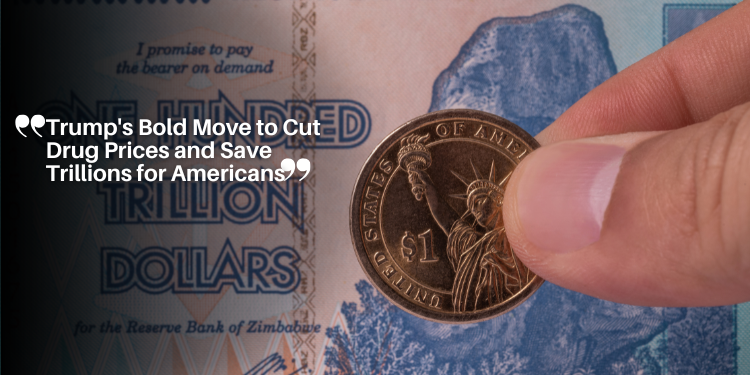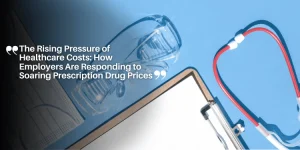Trump’s Bold Move to Cut Drug Prices and Save Trillions for Americans
By: Lara Barbosa Posted in: May 12, 2025

President’s Executive Order Aims to Slash Pharmaceutical Costs by Up to 90% by Aligning US Prices with Global Rates
In a groundbreaking move aimed at reducing the financial burden on Americans, President Donald Trump signed an executive order on Monday designed to lower prescription drug prices across the United States.
The order is set to bring about drastic cuts in pharmaceutical costs, potentially reducing prices by up to 90%.
The measure is part of the administration’s continued push to make healthcare more affordable for American citizens, particularly by linking the prices paid by government programs like Medicare to the rates charged in foreign markets.
The Rationale Behind the Executive Order
President Trump made it clear during a White House signing ceremony that the goal of the new policy is to end what he described as the unfair subsidy of foreign countries.
According to Trump, the U.S. has long been covering the research and development (R&D) costs for the global pharmaceutical industry, while other nations benefit from lower drug prices.
He expressed frustration at this practice, emphasizing that Americans have been unfairly burdened with the costs of drug development for the rest of the world.
“What’s been happening is, we’ve been subsidizing other countries throughout the world,” Trump stated, calling the signing of the order one of his “most important orders” to date.
“Some prescription drug and pharmaceutical prices will be reduced almost immediately by 50 to 80 to 90%,” he continued.
“Big Pharma will either abide by this principle voluntarily, or we will use the power of the federal government to ensure that we are paying the same price.”

The New Drug Pricing Policy: A Revitalized Approach
This executive order represents a more aggressive stance than the one taken by President Trump during his first term.
The new policy is a revival of the “most favored nation” (MFN) status introduced earlier, but with a broader approach designed to put more pressure on foreign countries to share the financial responsibility for drug development.
Under this system, the U.S. will no longer be the sole financier of global pharmaceutical R&D costs. Instead, foreign countries will be expected to contribute more toward these expenses.
In his recent communication on Truth Social, President Trump reiterated his commitment to making healthcare more affordable.
“Our country will finally be treated fairly, and our citizens’ healthcare costs will be reduced by numbers never even thought of before,” he promised.
“The United States will save TRILLIONS OF DOLLARS.”
A Closer Look at the Executive Order’s Provisions
The executive order directs key officials, including U.S. Trade Representative Jamieson Greer and Commerce Secretary Howard Lutnick, to take action against policies in foreign countries that artificially suppress drug prices.
The goal is to push for a more equitable system, ensuring that Americans no longer pay exorbitant prices for pharmaceuticals that are sold at much lower rates elsewhere.
In addition, the order directs Health and Human Services Secretary Robert F. Kennedy Jr. to establish clear targets for price reductions across all markets in the U.S. within 30 days of the order.
Kennedy’s team will then initiate negotiations with pharmaceutical companies to bring about these price cuts.
The Trump administration’s efforts are aimed at addressing what many experts see as an exploitative pricing structure.
According to White House officials, although the United States constitutes less than 5% of the world’s population, it accounts for about 75% of global pharmaceutical profits.
This unequal arrangement has long been seen as unsustainable, and the president has made it clear that the U.S. will no longer bear the brunt of these costs.
The Argument for Fairer Drug Pricing
The new policy also seeks to level the playing field between the U.S. and other countries by equalizing drug prices globally.
Trump pointed to the way American patients have effectively been subsidizing socialized healthcare systems in countries like Germany and across the European Union.
He argued that the U.S. should not be solely responsible for funding the bulk of pharmaceutical innovation, especially when other nations enjoy the benefits of cheaper drugs.
The order, which is more expansive than Trump’s previous initiatives, aims to tackle the broader issue of pharmaceutical pricing.
The approach includes not just adjusting Medicare Part B drug costs but extending these changes across the entire U.S. market.
According to White House officials, the expanded scope is intended to ensure that American taxpayers and patients no longer bear the full cost of pharmaceutical innovation.
“We don’t anticipate a negative impact on innovation,” one official stated.
“The United States alone should not be paying for all of the innovation in the entire world in this market.”
Tackling Anti-Competitive Practices
As part of the executive order, the Justice Department and the Federal Trade Commission (FTC) will work together to address anti-competitive practices within the pharmaceutical industry.
These agencies will focus on investigating and enforcing measures against companies that engage in unfair price manipulation, thereby ensuring that the benefits of the policy are fully realized.
Additionally, the Food and Drug Administration (FDA) will be empowered to import drugs from other countries, including Canada, to further reduce consumer costs.
The FDA currently has the authority to import certain medications from Canada if health and safety risks are not compromised.
Under the new order, this carve-out will be expanded to include other nations, allowing the U.S. to import cheaper drugs from abroad.
| Key Concern | Opposition | White House Response |
|---|---|---|
| 💡 Innovation | Concerns that the policy could stifle innovation within the pharmaceutical industry | The White House argues the current system is unsustainable and the policy is necessary to ensure fair pricing |
| 💰 Price Fixing | Accusations of price fixing in the pharmaceutical market | The White House clarifies that it’s not price fixing but ensuring market forces operate properly |
| 🌍 Global Pricing | Concerns about the practice of charging American consumers higher prices than in other markets | The White House emphasizes that this approach will prevent pharmaceutical companies from continuing this practice |
A Historic Move for American Healthcare
President Trump’s executive order has been described by many as a historic step toward correcting the imbalance in global drug pricing.
Robert F. Kennedy Jr., who is overseeing negotiations with pharmaceutical companies, praised the policy, stating that he “never thought that this would happen in my lifetime.”
He called the policy the “fulcrum of Bernie Sanders’ runs for the presidency,” signaling the profound impact this decision could have on the future of healthcare in America.
In conclusion, this executive order represents a bold step in the ongoing battle to reduce healthcare costs for Americans.
By tackling drug prices head-on and pushing for more equitable pricing structures across the globe, President Trump aims to save trillions of dollars and ensure that American patients no longer bear the brunt of global pharmaceutical costs.
The full effects of this policy remain to be seen, but its potential to reshape the pharmaceutical industry and healthcare landscape in the U.S. is undeniable.
Author
-

Lara Barbosa has a degree in Journalism and has experience in editing and managing news portals. Her approach combines academic research and accessible language, transforming complex topics into educational materials that are attractive to the general public.






